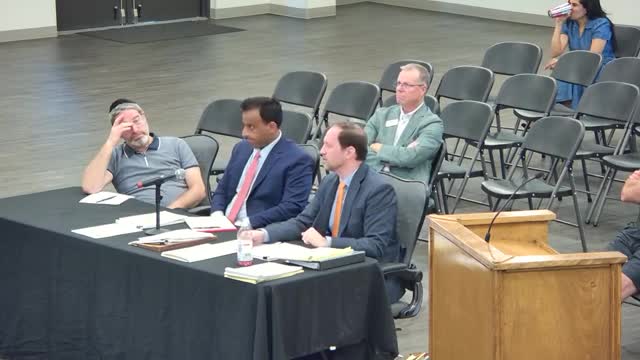Building safety concerns escalate as substandard structures debated
July 10, 2024 | Everman City Council, Everman, Tarrant County, Texas

This article was created by AI summarizing key points discussed. AI makes mistakes, so for full details and context, please refer to the video of the full meeting. Please report any errors so we can fix them. Report an error »

In a recent government meeting, officials discussed the condition of several buildings, focusing on the need for structural repairs and the classification of these properties. The conversation centered around a report by engineer Mister Childress, which included detailed inspections of select units within the buildings. While not all units were inspected, the report highlighted specific areas requiring immediate attention, particularly the replacement of joists in certain units.
The discussion revealed that units identified for joist replacement were documented with accompanying photographs and diagrams, providing a clear visual reference for the necessary repairs. For instance, in building 928, units eleven and twelve were noted to require three joists each. However, some units showed no signs of damage, indicating a mixed condition across the properties.
A key point of contention arose regarding the classification of the buildings as substandard versus dangerous structures. While it was acknowledged that the buildings are substandard, the engineer expressed uncertainty about labeling them as dangerous due to insufficient information. This distinction is crucial, as it affects the board's authority to mandate demolition or remediation plans.
The meeting concluded with a consensus that regardless of the dangerous structure classification, the board retains the power to declare the buildings substandard and enforce a remediation strategy. This decision underscores the ongoing efforts to address safety concerns and ensure the integrity of the community's housing infrastructure.
The discussion revealed that units identified for joist replacement were documented with accompanying photographs and diagrams, providing a clear visual reference for the necessary repairs. For instance, in building 928, units eleven and twelve were noted to require three joists each. However, some units showed no signs of damage, indicating a mixed condition across the properties.
A key point of contention arose regarding the classification of the buildings as substandard versus dangerous structures. While it was acknowledged that the buildings are substandard, the engineer expressed uncertainty about labeling them as dangerous due to insufficient information. This distinction is crucial, as it affects the board's authority to mandate demolition or remediation plans.
The meeting concluded with a consensus that regardless of the dangerous structure classification, the board retains the power to declare the buildings substandard and enforce a remediation strategy. This decision underscores the ongoing efforts to address safety concerns and ensure the integrity of the community's housing infrastructure.
View full meeting
This article is based on a recent meeting—watch the full video and explore the complete transcript for deeper insights into the discussion.
View full meeting
